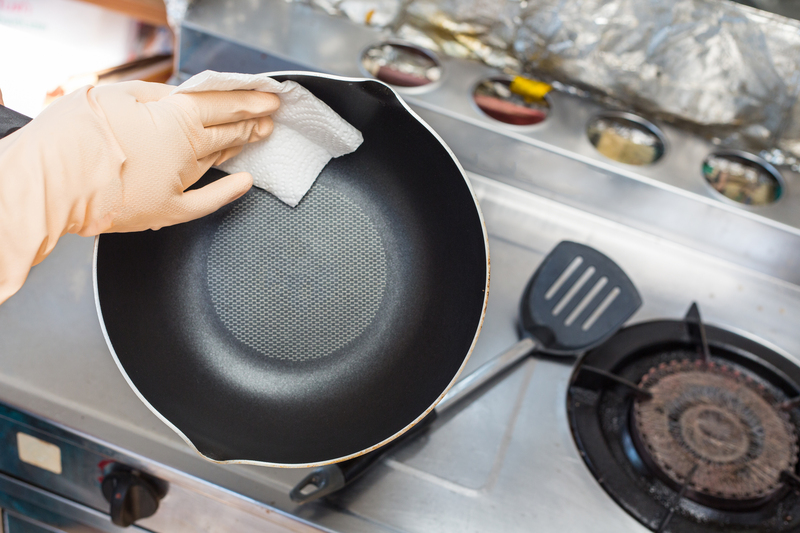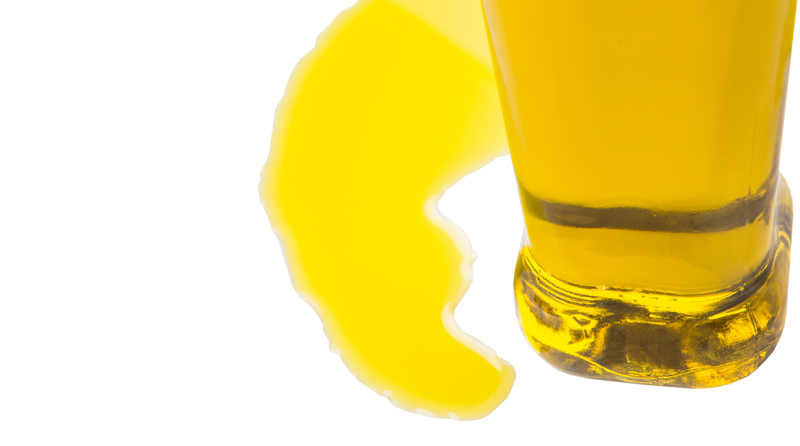Master the Art of Mold Prevention in Your Bathroom
Posted on 20/06/2025
If you’ve ever caught a whiff of mustiness or spotted unsightly dark patches lurking in the corners of your bathroom, you know just how persistent and problematic bathroom mold can be. Mold not only compromises your home’s aesthetic appeal but also threatens your indoor air quality and, potentially, your health.
Ready to transform your bathroom into a fresh, mold-free sanctuary? Let’s dive into the essentials of preventing bathroom mold, why it forms, and how smart, consistent care keeps problems at bay.
Understanding Bathroom Mold: The Basics
Mold is a type of fungus that thrives in moist, warm, and poorly ventilated environments—like the average bathroom. Its spores are microscopic, easily traveling through the air and settling on surfaces. What makes bathroom mold even more persistent is its adaptability—it can flourish on tiles, grout, walls, ceilings, and even fabrics and wood.
Common Types of Bathroom Mold
- Aspergillus: Frequently found on walls and ceilings, often appearing green or black.
- Cladosporium: Shows up as black or green spots on tile, grout, and painted surfaces.
- Stachybotrys (Black Mold): More dangerous, with a dark black or greenish appearance, commonly found on damp wood or drywall.
Prompt identification and proactive measures are essential because, once mold takes root, it can be surprisingly difficult to eliminate.

Why Mold Loves Bathrooms
Bathrooms are a magnet for mold due to:
- Humidity: Showers, baths, and sinks generate consistent moisture, raising humidity levels.
- Poor Ventilation: Steam lingers in bathrooms without adequate airflow, creating prime mold conditions.
- Frequent Water Exposure: Leaky pipes, splashes, and damp surfaces provide nourishment for mold growth.
- Organic Materials: Mold feeds on cellulose found in wallpaper, wood, and even the dust in corners.
Understanding these factors is the first step in mastering bathroom mold prevention.
The Ultimate Guide to Preventing Mold in Your Bathroom
Let’s explore proven, actionable strategies for mold prevention in bathrooms.
Follow these steps and transform your bathroom into a dry, fresh, and healthy retreat!
1. Optimize Ventilation
Proper airflow is the #1 defense against mold. Here’s how to maximize it:
- Use Exhaust Fans: Run your bath fan during and at least 20 minutes after showering. Consider upgrading to a more powerful, ENERGY STAR® rated model for maximum efficiency.
- Open Windows: If possible, crack a window after bathing to let humid air escape.
- Leave Doors Ajar: Keeping the bathroom door slightly open helps moisture dissipate faster.
- Install a Dehumidifier: In extremely damp environments, a small dehumidifier can maintain optimal humidity (below 60%).
2. Control Humidity Levels
Humidity control is crucial in the fight against mold. A simple digital hygrometer can help you monitor indoor humidity. Aim for levels below 60% to minimize mold risk.
- Avoid drying wet towels indoors--hang them outside or in well-ventilated areas.
- After showers, wipe down wet walls and glass doors to speed up drying.
- Repair any plumbing leaks or drip issues immediately.
3. Keep Surfaces Clean and Dry
Mold spores need just 24-48 hours of dampness to start colonizing. Develop habits to keep surfaces as dry as possible:
- Dry off tiles, shower walls, and tub rims after use.
- Replace damp bath mats and towels regularly.
- Use a squeegee on glass shower doors and walls post-shower.
- Don’t leave wet sponges or loofahs in the bathroom.
4. Choose Mold-Resistant Materials
If you’re renovating or updating your bathroom, select finishes and products designed to prevent mold:
- Install mold-resistant drywall (green board) in moisture-prone areas.
- Consider non-porous ceramic tiles or glass for shower enclosures.
- Use high-quality, mold-resistant grout and caulk for seams and joints.
- Choose mildew-resistant paint for walls and ceilings.
5. Regular Cleaning Routines
Routine cleaning is your long-term shield against mold growth. Make these tasks habitual:
- Disinfect all surfaces weekly: Use a bathroom cleaner or diluted vinegar on tiles, grout, and fixtures.
- Scrub grout lines: Mold loves to hide in porous grout; clean with a stiff brush and baking soda or an anti-mold solution.
- Wash curtains and bath mats regularly: These fabrics trap moisture and become a mold haven quickly.
6. Address Leaks Promptly
Even the smallest drip can lead to serious mold issues.
- Inspect under sinks, behind toilets, and around the tub/shower for hidden leaks.
- Check and replace worn-out seals and gaskets on faucets and pipes.
- Monitor your water bill: Unexplained increases could signal a hidden leak.
7. Replace or Remodel Problem Areas
If you struggle with chronic mold in certain areas, it may be necessary to replace materials that are saturated or irreparably damaged:
- Remove and replace sections of drywall or wood showing chronic mold stains.
- Re-grout or caulk tiles if mold is persistent in seams.
- Consider installing a mold-resistant shower curtain or glass doors.
8. Upgrade Your Bathroom Lighting
Mold hates sunlight and UV. If your bathroom has windows, consider opening shades or blinds to let in natural light regularly. For windowless bathrooms, bright, energy-efficient lighting discourages mold growth and helps you quickly spot developing issues.
9. Opt for Open Storage
Closed cabinets can trap moisture and restrict airflow. Consider open shelving or at least ensure bathroom cabinets remain dry and periodically opened to let air circulate.
10. Stay Vigilant With Inspections
Early detection is half the battle in bathroom mold prevention. Every month, inspect:
- Grout and caulking for discoloration or peeling
- Behind and under sinks, toilets, and tubs for leaks or moisture buildup
- Ceiling corners and exhaust vent covers for spots and mildew
The DIY Mold Prevention Arsenal
If you’re committed to mastering bathroom mold prevention, arm yourself with these handy tools:
- Squeegee: Wipe down walls and glass each time you shower.
- Scrub brushes: A stiff-bristled brush helps eliminate grime in grout lines.
- White vinegar: A natural mold killer; spray it undiluted on surfaces and let it sit before wiping.
- Baking soda: For gently scrubbing tiles and grout.
- Dehumidifier or moisture absorber: Especially useful in bathrooms without windows.
- Hygrometer: Digital devices monitoring your bathroom's humidity.
Implementing these simple tools into your routine makes it easier to enforce a zero-tolerance policy for mold.
When to Call a Professional for Mold Prevention and Removal
Sometimes, despite your best efforts, mold gets the upper hand. When should you seek professional help?
- Persistent, spreading black mold patches that reappear after cleaning
- Severe water damage or leaks that have affected walls, ceilings, or flooring
- Mold odors you can’t track to a visible source
- Mold affecting drywall, insulation, or structural materials
Certified mold remediation experts can safely inspect, treat, and remove dangerous infestations, and restore affected materials.
Frequently Asked Questions (FAQ): Mastering Mold Prevention in Bathrooms
Q: Is bathroom mold dangerous?
A: Some types of bathroom mold, like Stachybotrys (black mold), can trigger allergies, respiratory issues, and worsen asthma. Even less harmful molds contribute to poor indoor air quality and can damage surfaces over time.
Q: What is the best cleaner for bathroom mold?
A: White vinegar, hydrogen peroxide, and bleach-based cleaners are all effective. Avoid mixing these chemicals together, and always rinse surfaces thoroughly after cleaning.
Q: How do I prevent mold in a bathroom with poor ventilation?
A: Maximize drying with a dehumidifier, squeegee surfaces after showers, and choose open or wire shelving for better airflow. Consider installing or upgrading an exhaust fan if possible.
Q: Can painting over mold prevent it?
A: No--mold will continue to grow underneath paint. All existing mold must be removed and surfaces dried thoroughly before applying a high-quality, mildew-resistant paint.

Conclusion: Mold Prevention Is an Ongoing Practice
To truly master the art of preventing bathroom mold, commit to a combination of smart daily habits, proactive maintenance, and vigilant inspections. Mold may be relentless, but with the right techniques, you can outsmart it for good!
- Keep moisture and humidity in check.
- Ventilate, ventilate, ventilate!
- Adopt a thorough cleaning and drying routine.
- Invest in mold-resistant materials where possible.
- Spot and fix leaks immediately.
The result of your efforts will be a bathroom that not only looks pristine but feels clean, smells fresh, and supports the health of you and your family every single day.
Take charge, stay observant, and enjoy your beautiful, mold-free bathroom!
Bonus: Quick Checklist for Mold-Free Bathrooms
- Run exhaust fans during and after showers
- Dry all wet surfaces promptly
- Clean tiles and grout weekly
- Maintain plumbing and repair leaks immediately
- Inspect for mold monthly
By mastering these simple steps and keeping your bathroom dry and well-ventilated, you can prevent mold before it ever becomes a problem. Happy cleaning!




